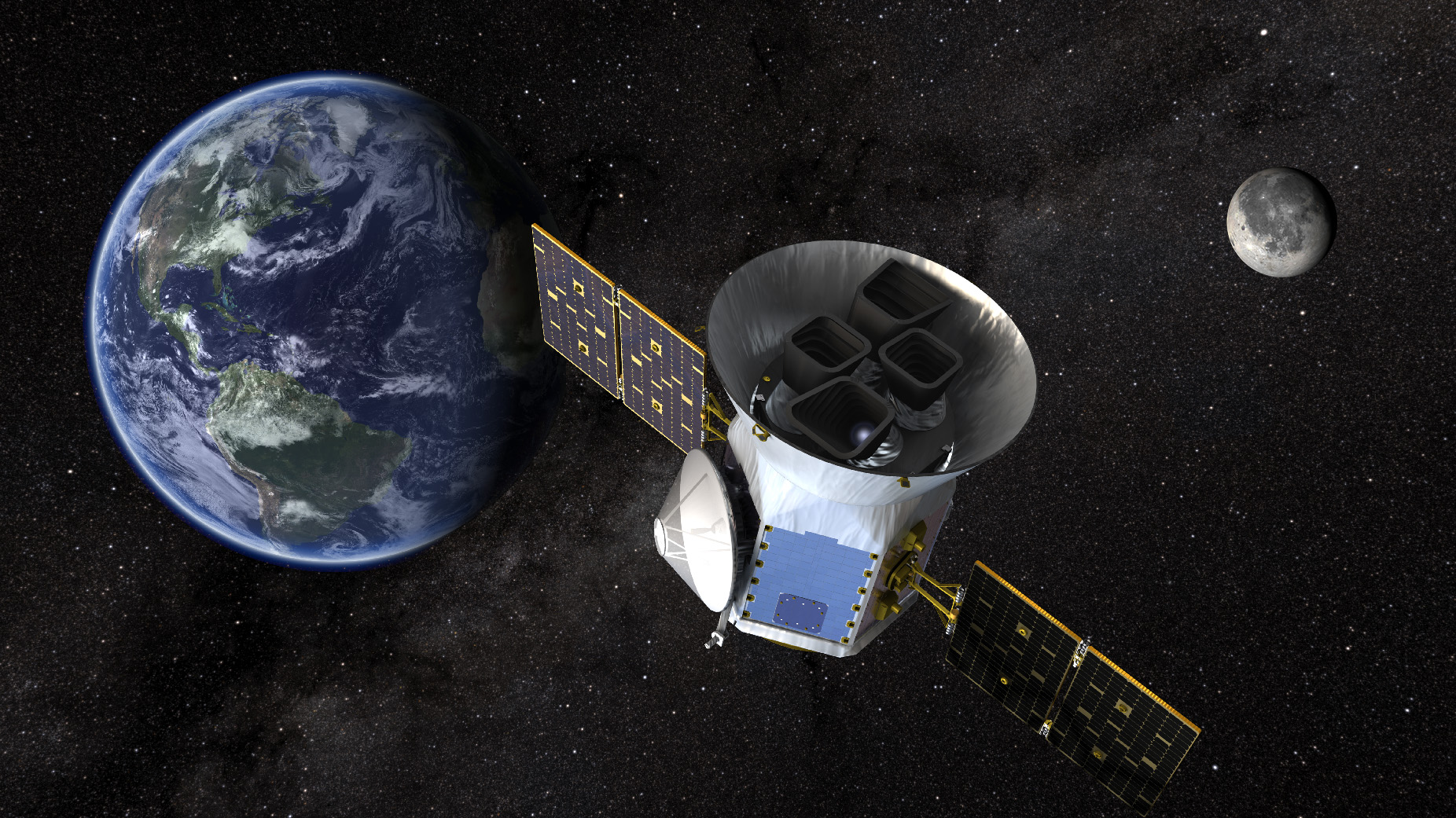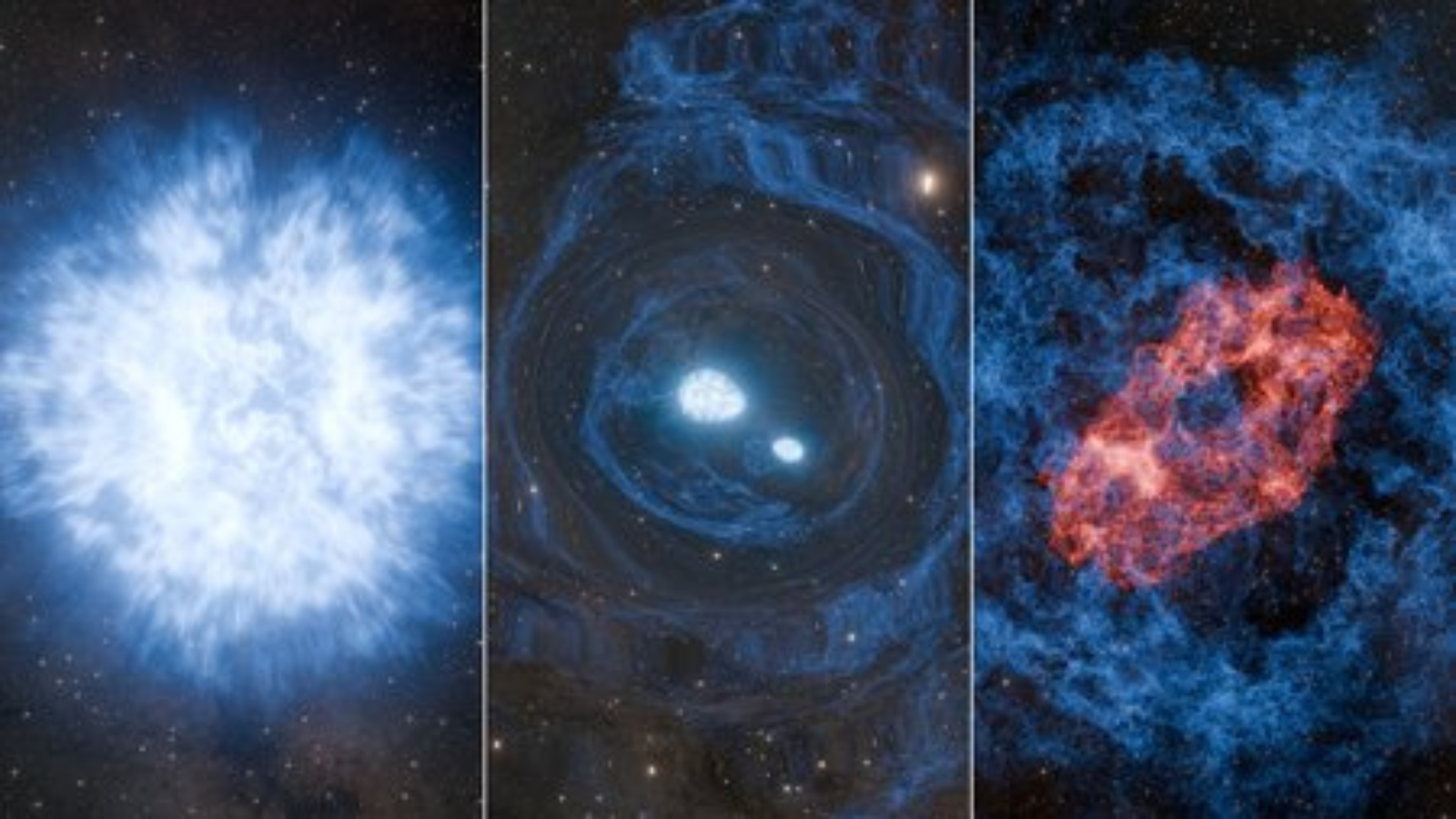NASA's TESS exoplanet-hunting satellite celebrates 5 years in space
NASA is blowing out the birthday candles as its TESS explorer marks five years of discovery.

NASA's Transiting Exoplanet Survey Satellite, or TESS, is now in its fifth year scanning the sky for new worlds.
Since its launch on April 18, 2018, TESS has mapped over 93% of the sky from its orbit around Earth, and in that time has produced 329 exoplanet confirmations and thousands more candidates.
Exoplanets are planets orbiting a star outside our own solar system. In order to find these worlds, four different cameras aboard TESS monitor specific sectors of space to measure changes in light around distant stars. When TESS first began its mission, the spacecraft captured such images at a rate of about one every half hour. According to NASA, mission operators have increased the probe's efficiency over the past five years to now handle a new image every 200 seconds.
Related: 9 alien planet discoveries that were out of this world in 2022
From these images, scientists at NASA's Goddard Space Flight Center are able to track the change in brightness of different stars. When an exoplanet crosses the face of its host star from TESS' perspective, the light from that star dims slightly. The TESS team is able to measure that change in light to spot exoplanets and determine how big it is. Follow-up work by other instruments on the ground and in space can characterize such worlds further — figuring out their mass, for example, or their rough atmospheric composition.
Some planets, like Earth, reside at just the right distance from their stars for water to exist as a liquid, rather than frozen solid or completely evaporated. Scientists refer to this as a star's habitable zone and often search for planets there in the hopes of discovering signs of life.
An exoplanet designated TOI 700 d was the first habitable-zone planet discovered by TESS. In January of this year, as the fifth anniversary approached, TESS discovered another planet in the same star's habitable zone, designated TOI 700 e.
Breaking space news, the latest updates on rocket launches, skywatching events and more!
From the first discoveries by TESS to its most recent, the probe has played a tremendous role in mapping the cosmos. During its mission, TESS has also contributed in collaboration with other spacecraft to discover a trove of new cosmic phenomena, including NASA's Swift, NuSTAR and Spitzer Space Telescopes, as well as the European Space Agency's (ESA) XMM-Newton satellite.
"We have more than 251 terabytes just for one of the main data products, called full-frame images. That's the equivalent of streaming 167,000 movies in full HD," said mission project scientist Knicole Colón in a NASA statement.
"We're celebrating TESS's fifth anniversary at work — and wishing it many happy returns!" Colón added.
Follow us on Twitter @Spacedotcom and on Facebook.

Josh Dinner is the Staff Writer for Spaceflight at Space.com. He is a writer and photographer with a passion for science and space exploration, and has been working the space beat since 2016. Josh has covered the evolution of NASA's commercial spaceflight partnerships and crewed missions from the Space Coast, as well as NASA science missions and more. He also enjoys building 1:144-scale model rockets and human-flown spacecraft. Find some of Josh's launch photography on Instagram and his website, and follow him on X, where he mostly posts in haiku.
